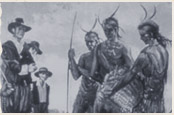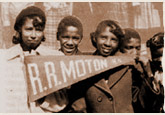Virginia Declaration of Rights
Yale University Law School: The Avalon Project
Bill of Rights
Yale University Law School: The Avalon Project
Description: George Mason authored The Virginia Declaration of Rights which was adopted by the Virginia Constitutional Convention on June 12, 1776. Virginia was the first state to adopt a statement of personal rights and the document eventually became part of the Constitution of the Commonwealth of Virginia. This document, partially based on the English Bill of Rights of 1689, would later evolve into the United States Bill of Rights.
Teaching Tips:
"Do Now" Suggestions
- Discuss why Virginia would create such a document on the eve of declaring independence from Britain.
- Have students analyze the Declaration of Rights for strengths and weaknesses. Are their any rights that are included in the Untied States Bill of Rights that are omitted from the Declaration? Discuss how the two documents are similar and different. Focus on rights covered, organization, and wording of the rights.
- Have students categorize the rights listed in the Virginia Declaration of Rights into groups such as religious rights, government protection, and judicial rights. Then compare the overview of each section to the United States Bill or Rights. Discuss how much is similar or modified.



